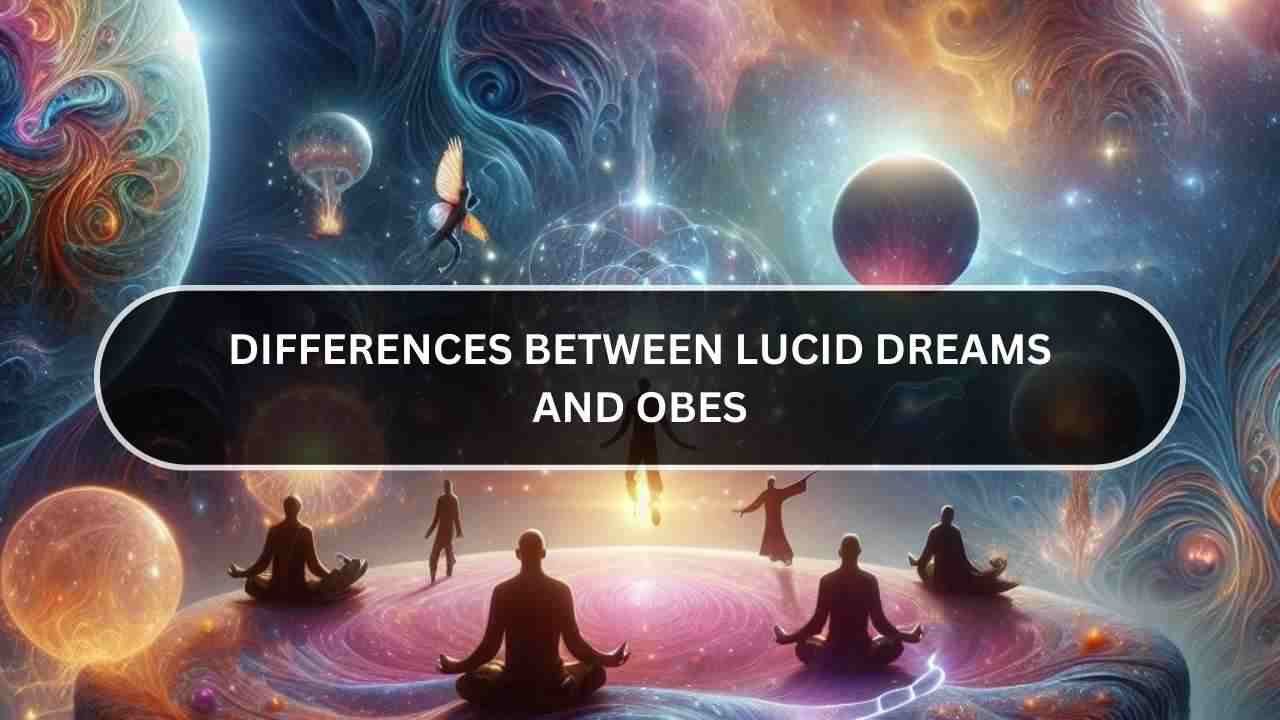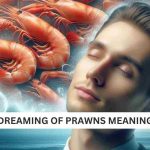Have you ever dreamed and realized that’s what you were dreaming of? Or felt like you were floating outside of your physical body? These fascinating experiences are known as lucid dreaming and out-of-body experiences (OBEs).
Lucid dreaming is when you become aware that you are dreaming while still asleep. It’s like waking up inside your dream, giving you the ability to control and shape the dreamworld around you. For many, this unlocks endless possibilities for exploration and creativity within the dream realm.
On the other hand, an OBE is a sensation of your consciousness separating from your physical body. During an OBE, you may feel like you are floating above yourself, able to perceive the world from a different vantage point than normal. Some describe OBEs as profoundly spiritual events.
Both lucid dreams and OBEs have captivated people’s curiosity for centuries. While they share some similarities, there is an ongoing debate about whether these are truly different states of consciousness or just varied perceptions of the same underlying experience.
In this article, we’ll dive deep into the world of lucid dreaming and OBEs – exploring their nature, similarities, differences, scientific viewpoints, and potential applications in personal growth and wellbeing. Get ready to embark on an extraordinary journey through the vast realms of human consciousness.
Exploring Out-of-Body Experiences (OBEs)
An out-of-body experience, or OBE, is a strange and fascinating phenomenon where you feel like your consciousness has temporarily left your physical body. During an OBE, you may sense that you are floating above yourself, perceiving everything from a viewpoint outside of your body.
There are different types of OBEs that people report. Some happen spontaneously without any intent, while others are induced through meditation, sensory deprivation, or other techniques. Spontaneous OBEs can occur due to high stress, trauma, near-death experiences, or even just falling asleep.
So what causes these mind-boggling experiences? There are a few potential explanations that have been proposed. Some believe OBEs are simply vivid hallucinations caused by shifts in brain chemistry or sleep paralysis. Others think they represent the consciousness actually separating from the body, lending support to certain spiritual or supernatural views.
Skeptics argue that OBEs are really just impressions created by the mind filling in gaps in sensory input. However, those who have experienced them describe the perception as feeling completely real and conscious.
Whether you view them as spiritual journeys or fascinating tricks of the mind, OBEs remain curious outliers in human experience worthy of deeper examination. As we continue studying consciousness, OBEs may provide vital clues to unraveling the mysteries of the mind-body connection.
Similarities between Lucid Dreams and OBEs
While lucid dreams and out-of-body experiences (OBEs) are distinct phenomena, they do share some overlapping characteristics. Understanding these similarities can provide insights into the nature of human consciousness.
One major parallel is the sense of heightened awareness and control that people report during both lucid dreams and OBEs. In a lucid dream, you realize you are dreaming and can often influence the dream events and environments. Similarly, during an OBE, there is a feeling of being conscious and self-aware while detached from the physical body.
Another commonality is the vivid nature of the subjective experiences. People frequently describe lucid dreams as feeling hyper-real, with amplified sensations and clarity. This sense of reality is also a defining feature of OBEs, where people feel fully conscious and present despite being outside their bodies.
Both lucid dreams and OBEs can provide opportunities for exploring alternative realms or perspectives beyond normal waking life. Lucid dreamers can construct entire dream worlds, while OBE experiencers perceive their surroundings from an extracorporeal viewpoint.
Additionally, there are anecdotal reports of people transitioning directly from a lucid dream into an OBE state, or vice versa. This fluidity between the two experiences suggests there may be an underlying connection in consciousness.
While the debate continues about whether lucid dreams and OBEs represent the same or different phenomena, their experiential overlaps offer tantalizing areas for further research into the enigmatic depths of the human mind.
Differences between Lucid Dreams and OBEs
While lucid dreams and out-of-body experiences (OBEs) have some similarities, there are also notable differences that set them apart. Understanding these distinctions is important for separating these unique states of consciousness.

Physiological Differences
From a scientific perspective, lucid dreaming and OBEs appear to involve different levels of brain activity and sensory perception. During regular dreaming, brain scans show heightened activity in areas like the amygdala and hippocampus. However, in OBE states, different regions like the temporoparietal cortex seem to be more active.
Sensory input is another key difference. In lucid dreams, you experience a completely internalized dream world constructed by your mind. But in OBEs, people report perceiving the real, physical environment around them from an external viewpoint outside their bodies.
Philosophical and Metaphysical Implications
The differing interpretations of lucid dreams versus OBEs have major implications philosophically and metaphysically. Lucid dreams are generally viewed as experiences created entirely within one’s mind. In contrast, OBEs are sometimes seen as the soul or consciousness separating from the body, supporting certain spiritual beliefs.
For those with more secular leanings, OBEs present a fascinating puzzle about how consciousness could exist detached from the physical brain and senses. The implications of this possibility, if proven true, would dramatically impact our understanding of reality.
Degrees of Control and Interaction
In lucid dreams, once you realize you’re dreaming, there is often a high degree of conscious control over the dream environment and your ability to interact within it. You can essentially shape the entire experience with your thoughts and intentions.
With OBEs, the level of control and interaction reported is more varied. Some feel like passive observers, while others describe being able to traverse physical spaces and even manipulate objects. The rules seem less defined compared to the unlimited possibilities offered in lucid dream states.
While blurred lines exist between lucid dreams and OBEs, these notable differences illustrate how they may arise from distinct neurological origins and processes. As research continues, we may gain deeper insights into these remarkable states of human consciousness.
Scientific Perspectives and Research
While lucid dreams and out-of-body experiences (OBEs) have been reported throughout history, modern science is taking a closer look at these fascinating phenomena. Researchers from various fields like neuroscience, psychology, and parapsychology are exploring lucid dreams and OBEs through different lenses.
From a neuroscientific view, scientists study the brain activity and neurological underpinnings of these experiences using technologies like EEGs and fMRI scans. They’ve found that lucid dreaming is associated with increased activity in parts of the brain involved in self-awareness and memory formation.
On the other hand, OBE brain patterns show unique signatures, like decreased integration between sensory areas and those involved in body representation. However, solidly pinpointing the origins of these dissociative experiences remains a challenge.
Psychologists examine lucid dreams and OBEs through perspectives like consciousness studies and states of awareness. Some focus on potential links to conditions like sleep paralysis or near-death experiences. Others explore therapeutic applications, such as using lucid dreaming to treat nightmares or anxiety.
The field of parapsychology takes a particularly open-minded stance, considering phenomena like OBEs as potential evidence for non-physical dimensions of consciousness that transcend the material world. These ideas fuel debates around the nature of reality and human existence.
Despite emerging research, studying subjective experiences like lucid dreaming and OBEs carries inherent difficulties around reliable data collection and interpretation. Cutting-edge tools like virtual reality simulations and brain-computer interfaces may provide novel insights.
As scientific understanding progresses, we move closer to unraveling the mysteries surrounding these odd yet intriguing states between sleep and wakefulness. The findings could reshape our comprehension of human consciousness itself.
Potential Applications and Implications
Beyond just being fascinating experiences, lucid dreaming and out-of-body experiences (OBEs) may have some exciting real-world applications and broader implications to explore.
Personal Growth and Self-Exploration
For many, lucid dreams provide a unique avenue for self-discovery and personal growth. By being aware and in control within the dream world, you can confront fears, explore new perspectives, or practice new skills in a safe environment. Deepening self-awareness through such experiences can foster positive transformations.
OBEs are also seen by some as gateways to heightened self-understanding and spiritual exploration. The sense of transcending physical limitations can open the mind to larger questions about consciousness and reality.
Therapeutic Uses
Researchers are examining how to harness the potential therapeutic benefits of lucid dreaming and OBEs. For example, lucid dreaming therapy shows promise in treating nightmare disorders and trauma by allowing people to resolve troubling dream scenarios.
OBEs have been anecdotally linked to pain relief, reduced anxiety, and healing from abuse or addiction for some individuals. However, more clinical research is still needed in this area.
Philosophical and Spiritual Implications
Lucid dreams and OBEs inherently raise profound questions about the nature of consciousness and its relationship to the physical world. Some see them as evidence that awareness can exist separate from the body, with major implications for certain spiritual and religious teachings.

Even from a secular view, these experiences challenge our typical assumptions about subjective reality and perception. They push us to re-examine the boundaries of the mind and what it means to be self-aware.
As we continue exploring lucid dreams and OBEs scientifically and experientially, the potential applications and implications will become increasingly illuminated. These strange states of consciousness may ultimately expand our understanding of the universe within and around us.
Also Read: WBTB, SSILD, and FILD Lucid Dream Techniques.









